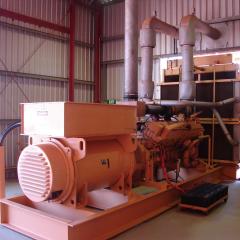The previous 3 blogs have introduced a methodology that can be used to represent the variability in the price of electricity at mines internationally. The factors that have been included are the average electricity price of the country where the mine is based, the geographical proximity of the mine in relation to population centres and electricity generators, and finally whether or not the mine is connected to an electrical grid, or if onsite generation is required. This simple model as an initial attempt to describe a very complex system. It is likely that other factors also influence the electricity prices, but it is believed that this model accounts for the majority of the variation. For instance, informal discussions with the author have identified that the specific timing of contract negotiations and the length of the contract are likely to account for a +/- 10% difference in electricity pricing. And the size of the magnitude of the baseload power consumption at a site can also influence the price.
Applying the model for electrical price variability to mines where the actual price is unknown allows the development of an energy cost curve (see Figure 5). This replaced the initial fixed-price method which resulted in energy cost appearing as a secondary axis on all the energy curves. Energy cost is shown on a per tonne basis using US dollars as the currency. The shape of the variability across the curve is altered when energy price is included in comparison to the original tonne intensity energy curve.
The variation in electricity price directly impacts the economic value that can be achieved by companies employing energy efficient comminution technologies. Two examples were presented in a previous blog to highlight the importance of electricity prices: employment of fine screens and the trade-off between SAG milling and HPGR at Gramolote and Tropicana mines. The results of the Gramalote and Tropicana case study is presented in Figure 6. The reduction in specific energy estimated for installing a HPGR circuit over a SAG milling circuit was large in both cases (6.7 and 1.5 kWh/t for Tropicana and Gramalote respectively). However, the reduction in energy cost was much less significant for Gramalote than Tropicana (1.7 and 0.1 $US/t for Tropicana and Gramalote respectively). The value of this energy reduction for Tropicana was not as great for the Gramalote project because electricity was three times cheaper at the Gramalote site. Thus, the decision was made to employ a HPGR-based circuit at Tropicana and a SAG-based circuit at Gramalote.




